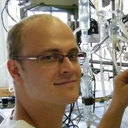Evaluation of systemic and dermal toxicity and dermal photoprotection by sour cherry kernels.
Atslēgvārdi
Abstrakts
The present report describes outcomes of animal studies conducted to determine the systemic and dermal toxicity of Prunus cerasus (sour cherry) seed kernel contents; and a separate evaluation of the photoprotective capacity of the kernel oil fraction. B6 mice and Hartley guinea-pigs were used for these experiments. Dosage groups of 6-8 animals were administered whole kernel meal in a dose range of 0-3000 mg/kg by gavage for 8 days, following which they were killed. The liver and kidney weights were recorded and histological examination performed on sections of these organs. Kidney function was assessed as blood urea nitrogen and creatinine and liver function by measurement of serum glutamic oxaloacetic transaminase, glutamic pyruvic transaminase and alkaline phosphatase. Dermal toxicity was evaluated in a Hartley guinea-pig model by comparing UVB-irradiated shaved skin to which the kernel oil had been applied with distilled water controls. In conclusion, no evidence of toxicity was observed to result from the consumption or dermal application of sour cherry seed kernel in the dose range at which it is likely to be used in foods or healthcare. Moreover, it was shown to have a powerful capacity to protect skin from UV damage. These results suggest it will prove to be a highly safe and effective addition to a wide range of products for general use.



